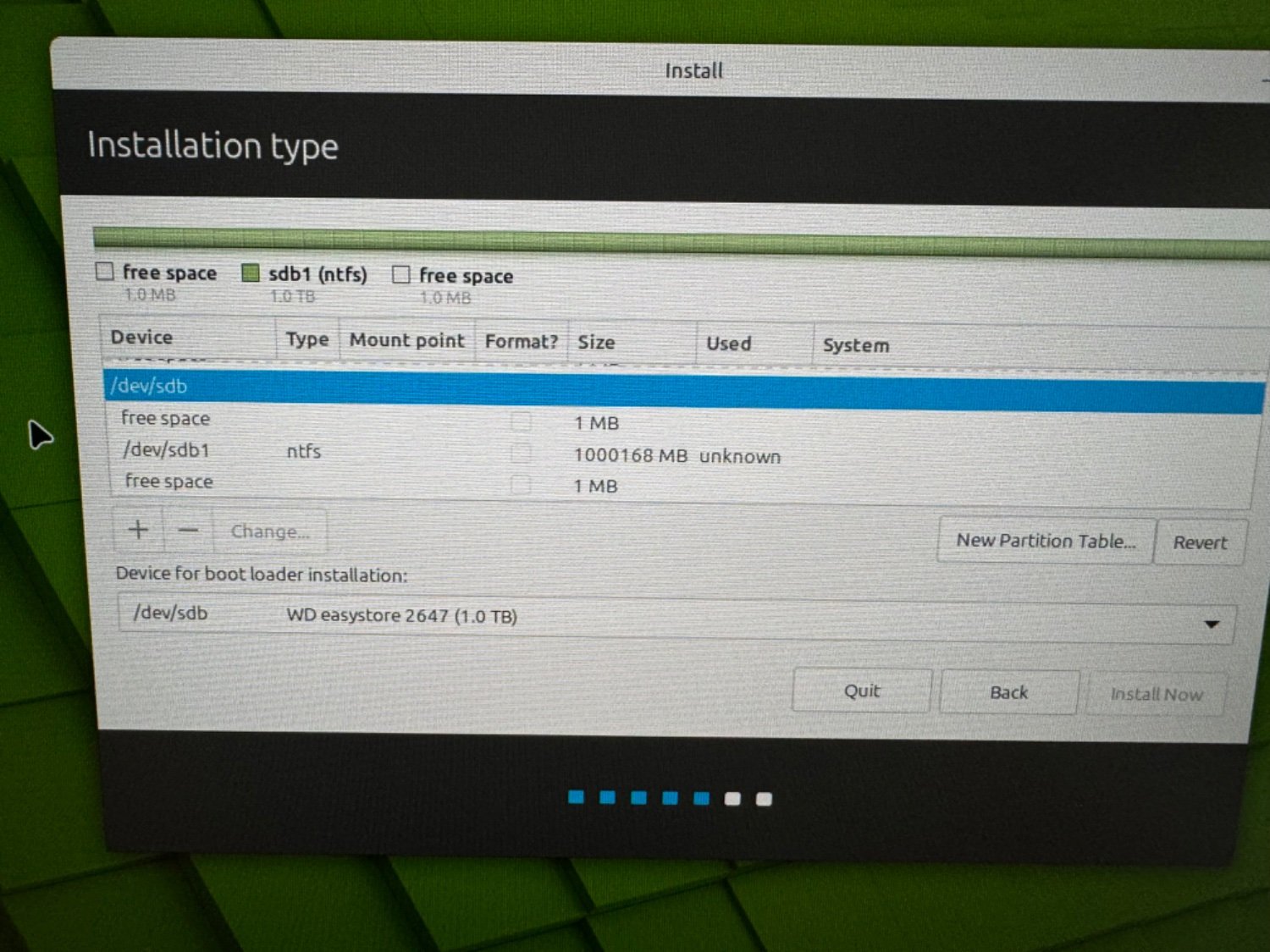this post was submitted on 03 Aug 2024
21 points (95.7% liked)
Linux Mint
1769 readers
1 users here now
Linux Mint is a free Linux-based operating system designed for use on desktop and laptop computers.
Want to see the latest news from the blog? Set the Firefox homepage to:
where is a current or past release. Here's an example using release 21.1 'Vera':
https://linuxmint.com/start/vera/
founded 3 years ago
MODERATORS
you are viewing a single comment's thread
view the rest of the comments
view the rest of the comments

sdb is your Western Digital drive. If you're really worried about messing up your internal Windows drive, you can physically disconnect the internal Windows drive. This will force the installer to use the only drive available (your WD drive). Then, you can plug the Windows drive back in once Linux is done installing.
When the Linux installation is done, change the boot order in your BIOS to boot from the WD drive first. Once your satisfied that Linux is working properly, run "sudo update-grub" from the terminal. This will make Linux locate all bootable operating systems and update the boot menu on your WD drive. Now, you can choose which OS your want at startup.
Booting from your secondary drive has the advantage of leaving your (primary) Windows drive completely untouched. If you decide you're not going to use Linux after all, then all you have to do to remove Linux is change the boot order back in your BIOS. Windows will boot normally, and then you can do whatever your want to the WD drive. (reformat back to NTFS, I assume).
Undoing a dual-boot means you have to remove the Linux partition, re-partition the windows partition so it takes up the full drive again, remove and replace the grub bootloader with a normal Windows bootloader so Windows can boot normally.